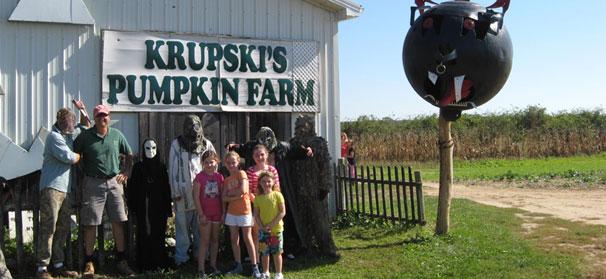

Nov 18, 2011People skills required when practicing agritourism
Why does a consumer choose to shop at one farm stand and not another? Why take a day trip to buy a pumpkin when one can be bought just as easily in a local supermarket? The difference is in the experience, according to sources.
Although some farmers are reluctant to explore marketing, many see it as a “growing” business, especially for those near major urban centers. While most farmers are experts at raising crops, very few are adept at raising sales. But such an initiative can help sell more crops, gain new repeat customers and help keep younger family members involved in the farm.
“It’s the experience,” said farmer Al Krupski of Krupski’s Vegetable & Pumpkin Farm in Peconic, N.Y., a one- to two-hour drive from New York City.
Acknowledging that pumpkins can be purchased virtually anywhere, Krupski knows visitors to his Eastern Long Island farm are there for an enjoyable “day in the country.”
To help make memories, Krupski’s is filled with photo opportunities. Visitors can have their picture taken with a group of monsters that inhabit the haunted corn maze, slide their neck on a guillotine, place their face in a plywood farmer cutout or photograph their children sitting in a giant wooden pumpkin, feeding chickens or taking a hayride. The props at Krupski’s are handmade, and customers appreciate the originality.
“People want to feel the dirt beneath their shoes, take their time picking a pumpkin and then bring it home to make a jack-o-lantern, or leave it on their table for Thanksgiving,” Krupski said. “People bring their children and talk about when they came here as children themselves.”
The stand is open daily from 9 a.m. to 6 p.m., June through November, employing about 10 workers during peak season.
Soon after Krupski began devoting his farm to pumpkins, he noticed more family customers. He also noticed they liked to linger and walk amid the pumpkins and farming elements. They also liked his creativity.
“Years ago, I made a tin man from spare parts and customers started taking their picture by it,” said Krupski, who annually adds a new visual item.
This year, it’s a giant spider. While the stand also sells Halloween decorations and free-range chickens, it’s the pumpkins and winter squash the “weekenders” seek. Nearly all of stand’s pumpkins are sold to weekenders, peaking during Columbus Day.
“Our success is heavily weather dependent,” he said. “We’ve got to have good weather to grow the pumpkins, and then hope it lasts to bring the customers.”
While fall weather is typically pleasant in eastern New York state, one October brought 20 straight days of rain. His second-biggest challenge is finding good seasonal help, as regularly being polite and courteous to the customers is another key aspect for farm stand success.
According to USDA’s 2007 Census, less than 10 percent of farms are involved in agritourism, indicating it largely remains an untapped opportunity.
“A farmer’s got to decide if he wants to do this,” said Jane Eckert, a St. Louis, Mo.-based agritourism consultant and sixth-generation farmer’s daughter. “There’s typically an initial reluctance, but it can help keep the farm in the family by involving younger family members and become a new income source.”
“You’ve got to make the transition to deal with people to succeed in agritourism,” said Michael May of Lazy Acres Plantation in Chunky, Mich. “It can be difficult.”
May primarily grows pumpkins and Christmas trees on his farm, which he bought from his parents in 2000. The farm is a 15-minute drive from Meridian, Mich., but it also draws customers from Jackson, Mich., and Tuscaloosa, Ala.
May’s father Rayburn first dabbled in agritourism in 1986, traveling to Alaska to buy three reindeer.
“Reindeer in Mississippi are an oddity,” May said. “It became a calling card for the farm. People would stop and, when they did, buy stuff.”
The farm’s gift shop mostly sells Christmas items, while its agritourism efforts include pig races, cow-milking demonstrations and a corn maze. May said customers also appreciate the educational aspects.
“People like their children to see where food comes from,” he said. “It’s a great niche market, but it’s still a lot of work.”
Farms typically have liability policies in the case of customer mishaps.
Eckert said agritourism has evolved from the typical pick-your-own business to include such activities such as nature walks, cross-country skiing, farm lodging, riding lessons, storytelling, haunted barns and living-history tours. A website and/or social media presence have become critical tools for success.
“The Internet has become the marketing-communications medium of choice because of its low cost and convenience,” Eckert said.
While Lazy Acres Plantation keeps a lively website, Krupski also communicates via Facebook.
“People want to hear what’s going on,” he said. “That’s what helps them decide where to spend their day.”
By Joseph Finora, VGN Financial Writer














